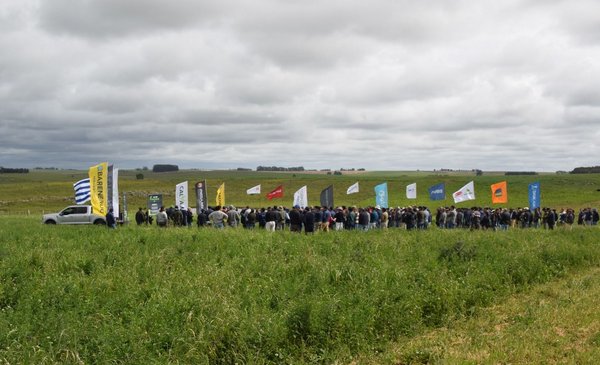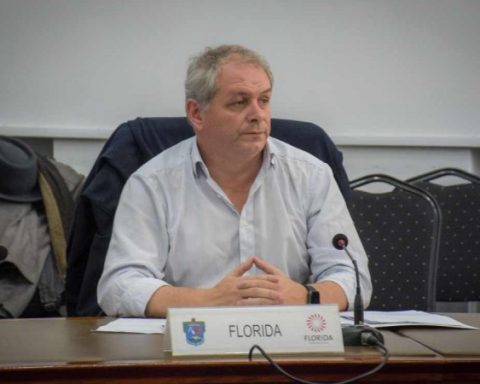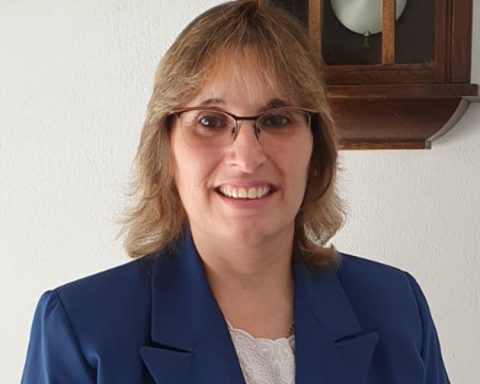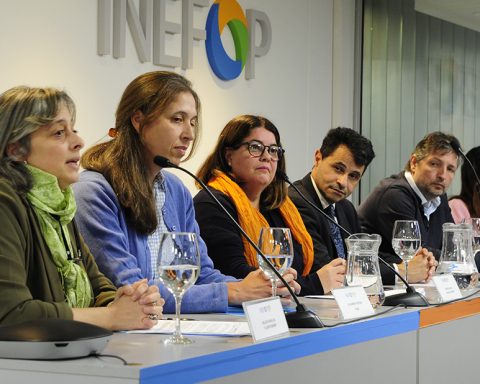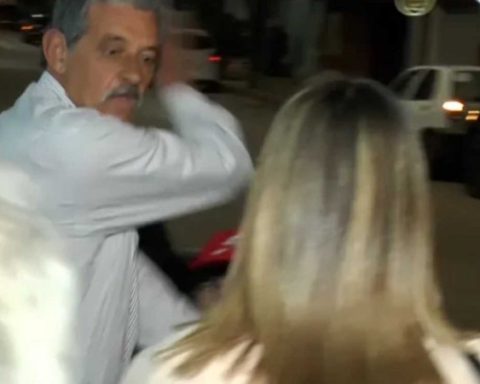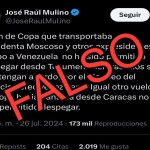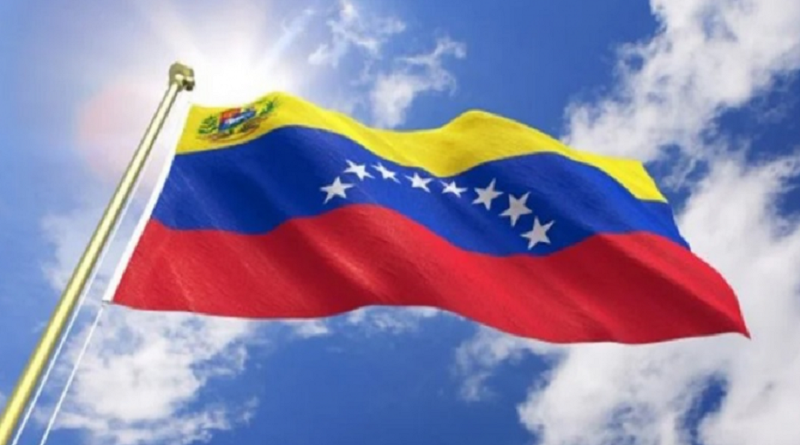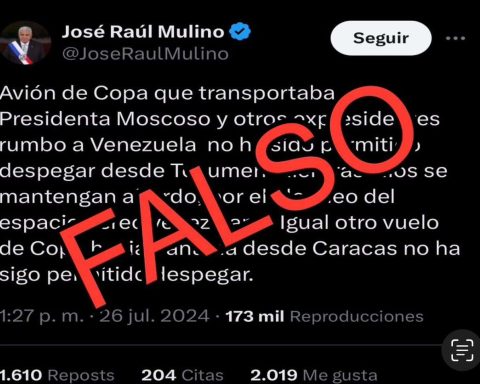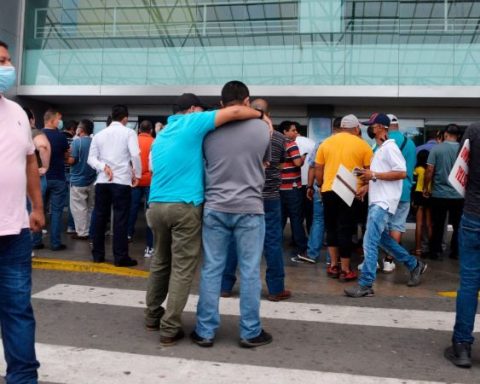In several areas of the country, producers are suffering from what they already define as a drought. At least, there is a clear scenario of water deficit that puts crops in check, including those involved in meat and milk production systems. Nevertheless, a visit to the San Alberto ranch, of the San Alberto Livestock Society, in San Gabriel, Florida, allowed us to go through an interesting sequence of paddocks with an impressive, abundant, varied, surprisingly green forage productionwhich captivated some 1,000 people who attended Forrajeras 2022, the traditional activity organized by Calvase.
This year the proposal was titled “Road to excellence” and exhibited values considered key in the management of the host companies, San Alberto and Calvase, at four stops in the field: “planning, practicality, execution and sustainability”.
After thanking the companies that supported the undertaking, the homeowners and the hundreds of visitors, Ignacio Otegui, general manager of Calvase, told The Observer: “The wonderful thing that is done in this field, plus what we propose from Calvase and MegaAgro with our 360 solutions, they were a perfect caller, an impressive lot of people came and that left us very happy, especially because of what they told us that they contributed each of the talks”.
john samuel
Ignacio Otegui, welcoming visitors, at the beginning of a day with a lot of information.
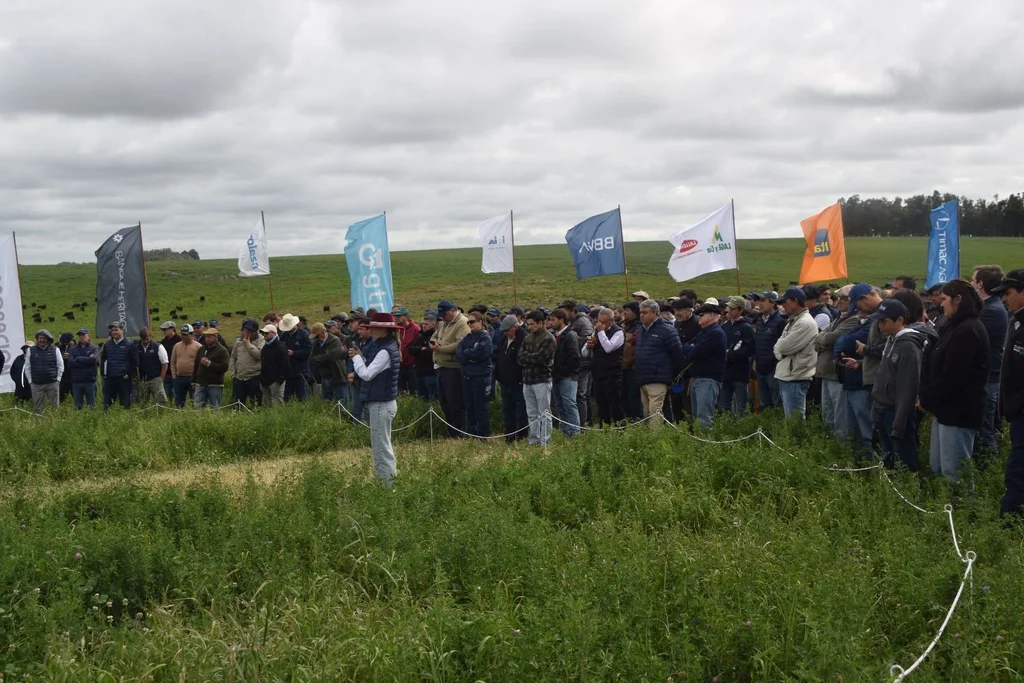
john samuel
The number of visitors validated the attraction that the Forrajeras event arouses each year.
The value of giving life to the soil
“Here, in San Alberto, things are done very well, there is planning, there is organization, there is execution, they have business management of the field, we have seen impressive pastures, we are in the middle of the dry season and in any case we saw very good first-year pastures. and third year meadows also very good, also very good greens”, he added.
“People asked why everything is so green, why they produce so much, so well, and the answer is in the focus of the day, it was to transfer the importance of giving life to the soil, something that Calvase works a lot on ”he indicated.
He added that “it is essential to look at the integration of the entire business in which pasture participates, it is not just choosing a seed, it is taking into account the technology that is incorporated into that seed, fertilization, health management with the agrochemicals and also focus on the importance of having a soil in good condition”.
In response to a query, he stated that if things are done the right way, as in San Alberto, “everything that was seen here at each of the stops can be transferred to other establishments”.
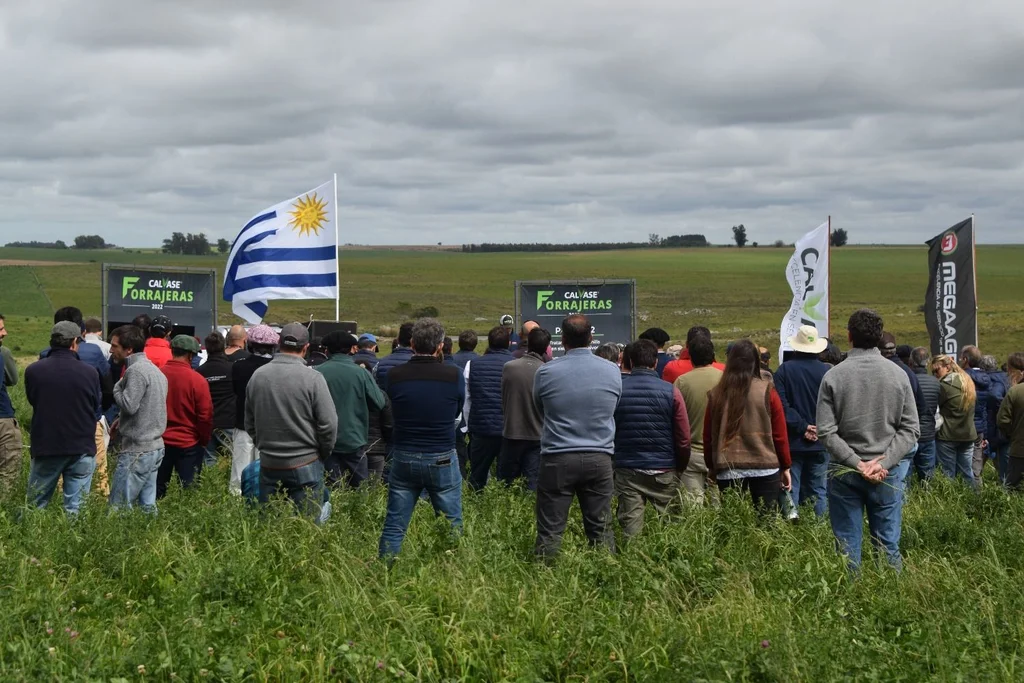
john samuel
The Uruguayan flag, present at each of the four stops in the field.
MOJ: young organic matter
“If you look at the vast majority of pastures in Uruguay, two or three species are used, usually fescue, white clover and lotus, or ryegrass, white clover and lotus, and here we saw five, even more, because the sum makes that generates a much healthier underground ecosystem for you, and what one species does not give you, another gives you… today we talk a lot about MOJ, about young organic matter, about the first centimeters, about how to manage with livestock or in the rotation with agriculture we give life to the soil so that there are healthy roots, so that there is microbiology, so that there are worms, so that there is better absorption”, explained Otegui.
“All this can be transferred to all of Uruguay, of course, for that, to contribute, what Calvase is doing is changing the chip for the producers, we must see the environments of course, but there is much to do if we begin to prioritize the soil and then we define the species”, he pointed out.
“Here we saw cebadillas, which because it is biennial the first year gives you a lot of food, the second it begins to subside and then the contributions of alfalfa, fescue, white clover, lotus begin… we are in a crystalline soil, with a Coneat 100, acid fields and we saw some tremendous alfalfa, people say that alfalfa is for Colonia and some places in Soriano, but we are in Florida and we saw a show of INIA Chaná alfalfa, also Crioula and P30 from Baremburg, which What happens is that in many fields we were running out of soil, we came with a management that left them compacted and then what we are looking for is that the soils be a sponge, that the nutrients are really available for those plants, that is why we must talk about 360 solutions, fertilization, agrochemicals, management, so that all the legs are associated to give life to the soil and that the seeds later, with their treatment, with all the technology, express their full potential”, he added.
In Sal Alberto, as explained, “there are high loads, between 2.5 to 3 Livestock Units per hectare, more than 500 kilos of meat are produced, 30 liters of milk on average, it is well above the records of other establishments and they achieve it on a crystalline floor, that is to say that by planning well and executing well, it can be done”, concluded Otegui.
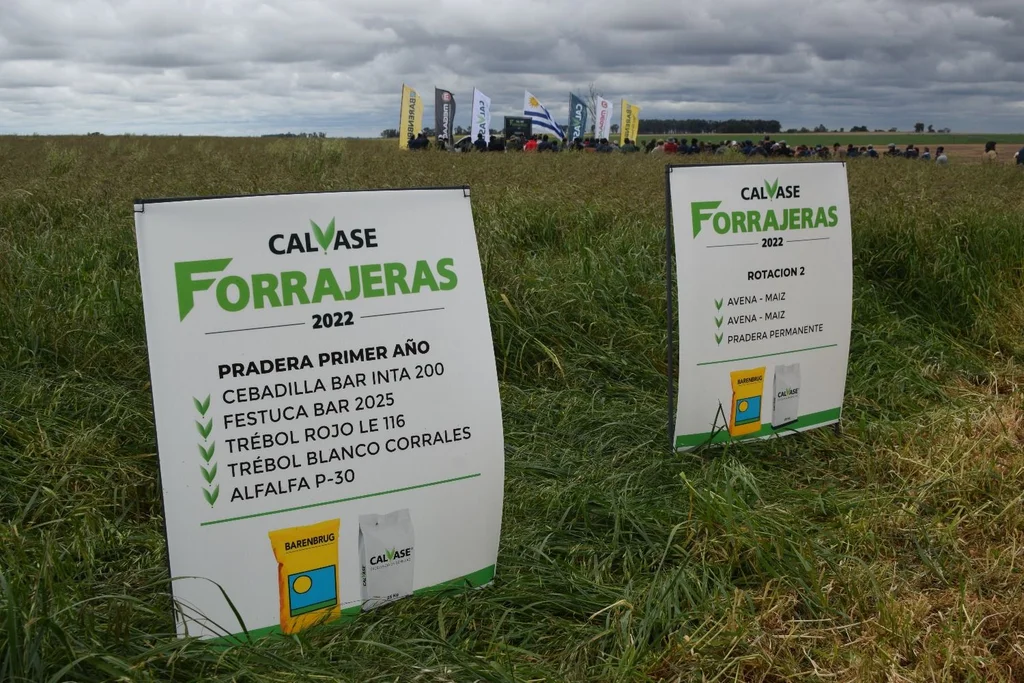
john samuel
The information of each combination in the management of species, in each site of the field visited.
The phrases
“In national production, if one decides not to have a very low ceiling, things can be achieved, the tools are there, there are possibilities at the forage level to have development and growth that will finally demystify certain figures that our country has historically faced, It is the key that we producers have to be able to have a development that the country deserves, it is the possibility of putting a double floor in the countryside to generate much more wealth, much more employment and that Uruguay as an agricultural producer country has a sustainable development ” .
Alberto González, director of SG San Alberto
“It is highly evaluated by research, it is necessary to have high loads to have a high level of profitability and that goes hand in hand with grass production, a high load where grass does not have an important participation calls into question the results of the dairy, the improvement of pasture production linked to different varieties, grazing management, fertilization and the general management of pasture production makes the dairy farms increase the load and milk productivity per hectare and that, with the values and the costs that exist in the dairy, is what can make the profitability of a dairy farm possible”.
Gabriel Fernandez, president of Conaprole

john samuel

john samuel
It became clear that it is possible to have optimal reserves, even when the rains have been missing for a long time.
October 11, a special day
Juan Miguel Otegui, at the close of the activity, thanked each of the companies that supported Forrajeras 2022, the visiting producers, the Calvase and MegaAgro team, and the homeowners: José “Pocho” González, Alberto González and Alejandro González, “three generations of a Uruguayan family business, we feel identified with you”he said, thanking the generosity for opening the doors of an establishment where work is done “so successful at all levels, in the industry, in the field and in the cabin”, asking for a loud applause to reward that management.
Excited, he told an anecdote related to the date of the activity, on October 11: that day his father, José Miguel Otegui, would have turned 75. “What better tribute than to remember him like this, working, with the whole family, as he taught us”he highlighted.
He recalled that on a visit to the Las Piedras refrigerator they spoke with Alberto about the coincidence of the date and with “Pocho” González on Tuesday the 11th they recalled the number of times that José Miguel visited the ranch, when both were members of the San Ramón Group.
Regarding the value of the family, Otegui pointed out that he actually has 12 brothers, the 10 of his family and also José Pedro Aicardi and Santiago Raffo, “my partners, my brothers 11 and 12”.
To the homeowners and to each one of the personalities on the closing panel, he presented a set of artisanal knives on behalf of Calvase and MegaAgro. Also “to a friend with whom we have been working together for five years, with the new genetics we are working on, Eduardo Bayley Bustamante, president of Barenbrug-Palaversich, a great value.”
Finally, he thanked the presence of businessmen from Argentina and Paraguay at the conference.
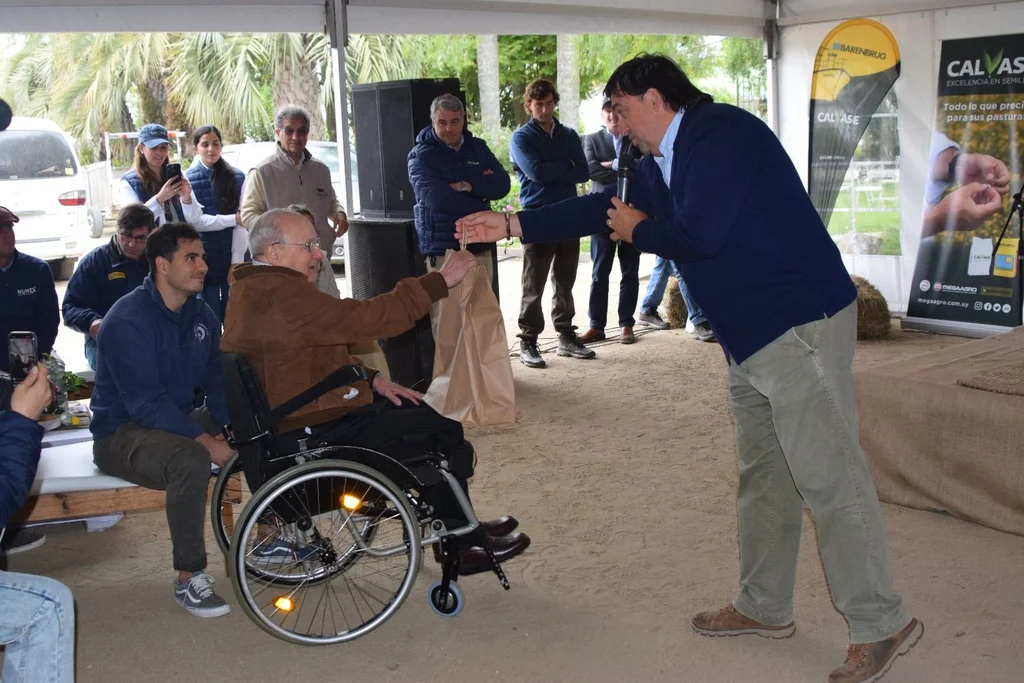
john samuel
Recognition of José Florentino “Pocho” González.
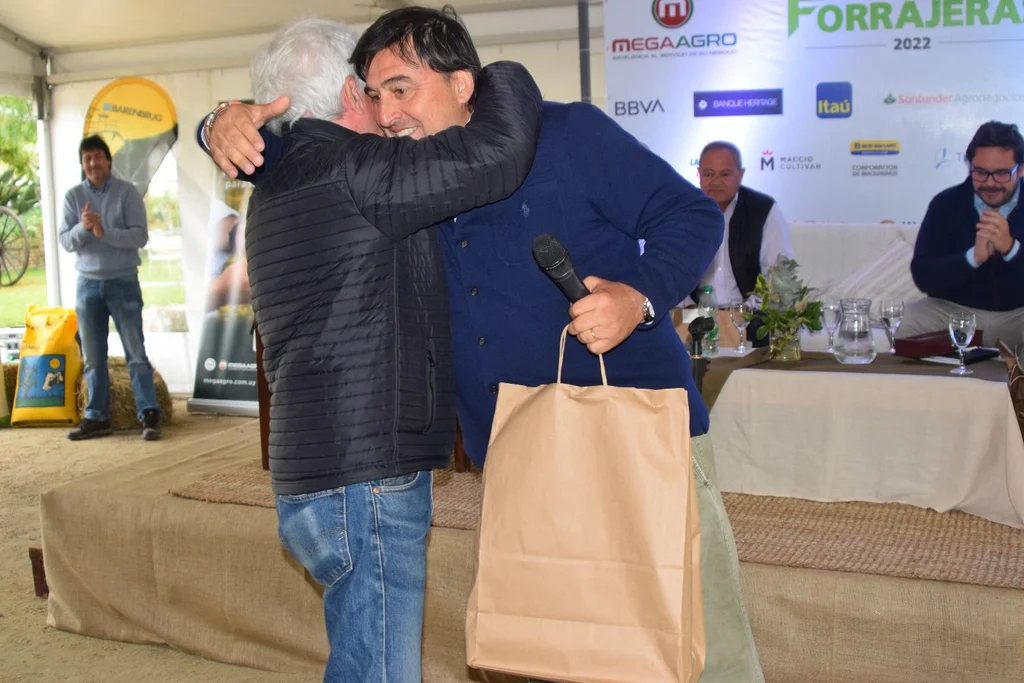
john samuel
The recognition to Eduardo Bayley Bustamante, president of Barenbrug-Palaversich.
This is how it was lived
Thanks to the San Alberto family and team, the exhibitors, the sponsors, the Calvase and Megaagro ? team, and everyone who joined us! ? pic.twitter.com/IwiVjBTMj2– Calvase (@CalvaseUy) October 13, 2022
